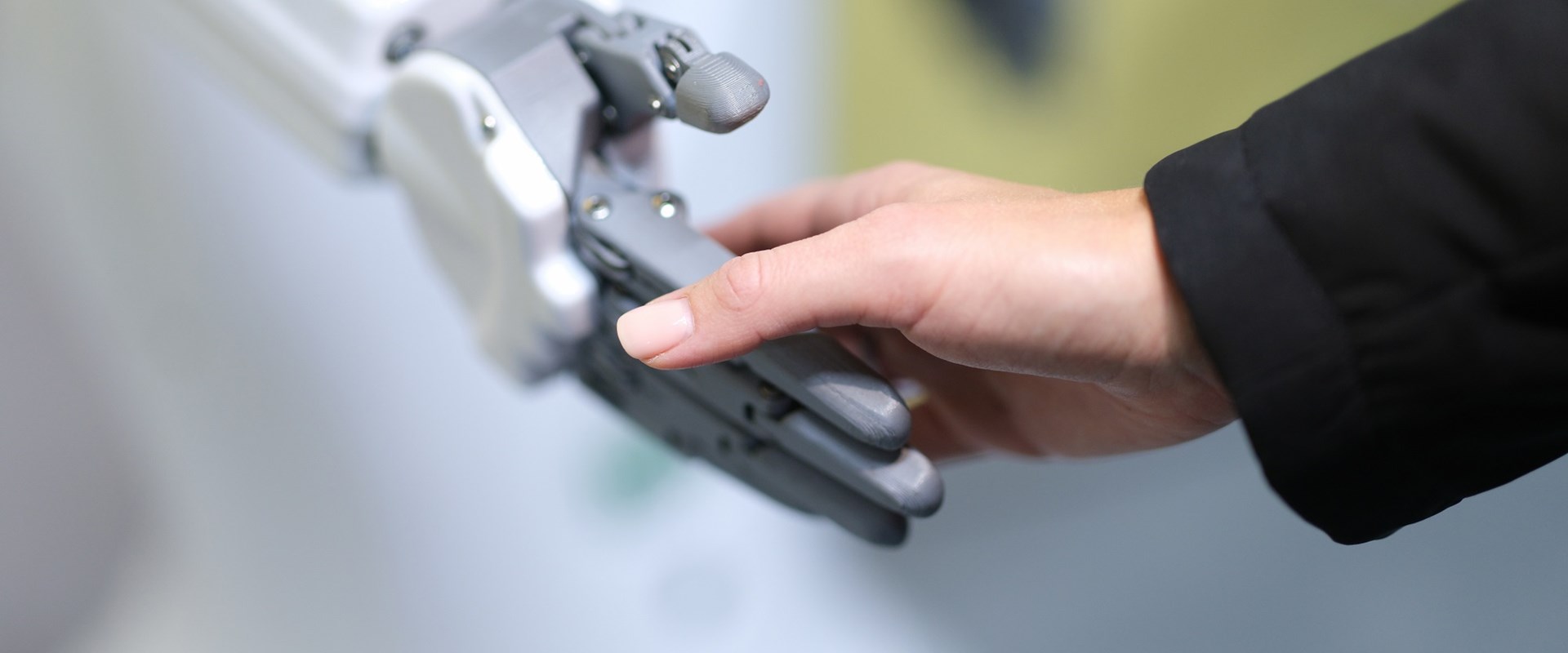Against the backdrop of the hearing at the Court of Appeal in Comptroller-General of Patents, Designs & Trade Marks (appellant) v Emotional Perception AI Ltd (respondent) - held on 14-15 May 2024 - we provide an update on patenting artificial intelligence (AI) inventions before the UK Intellectual Property Office (UK IPO).
WHY IS AI IMPORTANT TO THE UK?
The UK’s National AI Strategy recognises “the power of AI to increase resilience, productivity, growth and innovation across the private and public sector”. According to a new report commissioned by Microsoft, AI also represents a £550 billion opportunity for the UK over the next 10 years.
Given the potential of AI to unlock economic, societal, and technological benefits, it is important that UK IP legislation, and particularly UK patent law, continues to foster (rather than risk impeding) AI innovation.
WHY IS THE EMOTIONAL PERCEPTION CASE BEFORE THE COURT OF APPEAL?
The present appeal is against the Order of Sir Anthony Mann (sitting as a High Court Judge) on 19 December 2023 that allowed an appeal from Emotional Perception AI Ltd. and set aside the UK IPO’s earlier refusal of Emotional Perception’s GB patent application no. 2583455 (GB ‘455).
The claimed invention in GB ‘455 is directed to “A system for providing semantically relevant file recommendations”, the system including a trained artificial neural network (ANN), and “A method of providing semantically relevant file recommendations in a system including an artificial neutral network "ANN" having an output capable of generating a property vector in property space” (that includes a step of training the ANN). An example application is recommending music track recommendations to an end user by analyzing music tracks through the trained ANN. Whereas the UK IPO deemed the invention excluded as “a program for a computer … as such” under UK law, Sir Mann disagreed. An invention involving an ANN is not a computer program as such, he argued, irrespective of whether the ANN is implemented in software or hardware.
Our earlier commentary on this finding can be found here.
WHAT ISSUES ARE THE COURT OF APPEAL CONSIDERING IN THE EMOTIONAL PERCEPTION CASE?
1. The definition of “computer” and “program” for the purpose of applying the exclusion under section 1(2)(c) Patents Act 1977.
Here, Emotional Perception opposed the Comptroller’s broad definition of “computer”, which encompassed ANNs, by arguing that a “computer” is something akin to a CPU and not a diffuse network, but that, even if an ANN is a computer, no “program” can be judged to be present because the weights and biases that form an ANN do not define instructions carrying “an element of imperative or command” to do something.
2. Whether an ANN-based invention also falls foul of the “mathematical method … as such” exclusion under section 1(2)(a) Patents Act 1977.
Emotional Perception argued that the claimed ANN has a practical application - providing music track recommendations to an end user - that goes beyond mere mathematical theory. Hence, Emotional Perception argued, the “mathematical method … as such” exclusion should not apply.
3. Whether the claimed invention in GB ‘455 provides a technical contribution.
On this issue, the Comptroller had argued that the contribution of the claimed invention - e.g., a music track recommendation - was only a better or improved ”message” in an aesthetic sense, and so was unable to satisfy the UK’s Aerotel test for demonstrating a technical contribution.
Conversely, Emotional Perception argued that sending such a ”message”, which amounts to an external transfer of data, occurs beyond (i.e., outside of) a computer program and so is sufficient to define a technical contribution.
These arguments prompted discussion on whether the actual contribution of the claimed invention could lie in training the ANN. Here, the Comptroller argued that a clever computer program is a computer program nonetheless, unless a technical contribution exists (using the AT&T signposts as guidance) that elevates the invention beyond the computer program exclusion.
WHAT IS THE UK IPO'S CURRENT POSITION IN RELATION TO EXAMINING AI INVENTIONS?
In response to Sir Mann’s judgment, the UK IPO issued (on 29 November 2023) statutory guidance declaring that “Patent Examiners should not object to inventions involving an ANN under the “program for a computer” exclusion of section 1(2)(c)”. Our previous report on this guidance can be found here.
More recently (on 7 May 2024), the UK IPO revised their examination guidance to provide updated examples as to how to apply UK patentability law to inventions involving artificial neural networks:
- Scenario 13 - Optimising a neural network.
- Scenario 14 - Avoiding unnecessary processing using a neural network.
- Scenario 15 - Active training of a neural network.
Neural network optimisation (scenario 13), for instance, would now be examined by the UK IPO as follows:
“The contribution is a computer-implemented method of generating an optimised neural network by rationalising a trained base neural network, the output of the optimised network is compared to that of the base network and if the output differs beyond a threshold further optimised networks are iteratively generated until one is found whose output is within a threshold difference to the base network.
Following the judgment in Emotional Perception, an invention involving an artificial neural network (ANN), whether implemented in hardware or software, is not a computer program as such. No other exclusion applies.
The invention defined in the claim is not excluded under section 1(2) as a program for a computer as such.”
As for what an invention must do to benefit from the Emotional Perception moratorium, the guidance states:
“To qualify as an invention involving an ANN, the invention must either claim an ANN itself or include claim limitations to training or using an ANN. Otherwise, the Emotional Perception judgment will not apply.”
The updated examination guidance also reminds us:
“The judgment in Emotional Perception is being appealed to the court of appeal. It is binding on the IPO until such time as the court determines otherwise.”
WILL THE EMOTIONAL PERCEPTION CASE HELP OR HINDER PATENTING AI INVENTIONS IN THE UK?
At the time of writing, the UK IPO’s approach to examining AI inventions is applicant-friendly, at least in the sense that that applicants need not worry (for the time being) about the early hurdle of subject matter eligibility for inventions involving an ANN.
This may prompt applicants to reconsider their patenting strategies when seeking to protect their AI inventions in multiple jurisdictions. For instance, attempts to patent an invention directed to optimising a neural network that provides generic output data (cf. scenario 13 of the UK IPO’s latest guidance) could face relative difficulty in:
- the US, where it could fall foul of step two of the Alice test, which seeks to determine whether a claim recites additional elements that amount to “significantly more” than a judicial exception [1].
- Europe, where the Comvik approach involves identifying differences over the closest prior art and only considering those differences which contribute to technical character (that is, which contribute to producing a technical effect serving a technical purpose) in the assessment of inventive step.
We acknowledge, nonetheless, that overcoming the UK IPO’s “a program for a computer … as such” exclusion is not the same as providing a technical contribution that supports the presence of an inventive step. Considering scenario 13 of the UK IPO’s latest guidance further, it may be the case that the claimed invention needs to specify additional technical features (such as data tied to a specific technical system, thereby aligning with the Comvik approach in Europe) to reach this end.
How the Court of Appeal will ultimately decide on the Emotional Perception case remains to be seen. The issues raised, however, such as what constitutes a technical contribution under UK patent law, and the degree of harmony with EPO case law, go to the heart of AI patentability and have the potential to impact AI innovation in the UK for years to come.
We will report further developments on this case as they occur. To learn more about AI and IP in the meantime please visit our AI hub.
To find out how IP can help you create commercial value from your AI innovations, feel free to contact any of our electronics and computing team.
FOOTNOTES
- A point of comparison here is example #39 in the USPTO’s Subject Matter Eligibility Examples: Abstract Ideas, which concerns a Method for Training a Neural Network for Facial Detection - i.e., a neural network trained on specific data (digital images) - that is eligible for patent protection.





